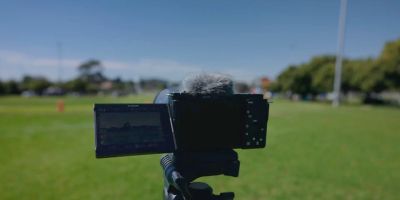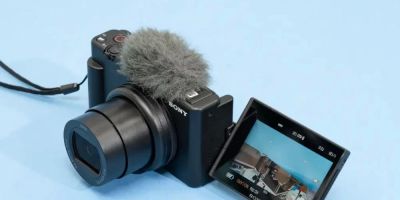- Understanding Low-Light Photography
- Key Settings for Low-Light Photography
- Choosing the Right Lens for Low-Light Photography
- Common Low-Light Photography Techniques
- Real-Life Examples of Low-Light Photography
1. Understanding Low-Light Photography
Low-light photography is all about capturing great shots in dim environments, such as at night, indoors, or during overcast weather. It presents a unique set of challenges, as there isn’t enough available light for your camera's sensor to work optimally. However, mastering low-light photography can lead to stunning and dramatic images that many photographers find rewarding.
The key to success in low-light photography is adjusting your camera settings to maximize the available light without introducing too much noise or blur. Understanding how to balance your camera's aperture, shutter speed, and ISO settings will make a significant difference in the quality of your low-light photos.
In this article, we’ll break down the essential camera settings for low-light photography and provide tips for capturing clear, sharp, and vibrant images, even when the light isn’t on your side.
2. Key Settings for Low-Light Photography
In low-light conditions, the right camera settings are crucial for achieving the best possible results. Let's dive into the essential settings that every photographer should master when shooting in low-light environments:
Aperture (f-stop)
The aperture controls the amount of light entering your camera. In low-light conditions, a wide aperture (a smaller f-number) is essential to allow more light into the lens. Aim for an aperture of f/1.4 to f/2.8, as this will allow your camera to gather as much light as possible, making it easier to shoot in darker environments.
Choosing a wider aperture also helps achieve a shallow depth of field, creating a beautiful, blurred background (bokeh effect) that can enhance the subject of your photo. However, keep in mind that extremely wide apertures might not be ideal for all types of shots, such as landscapes, where a deeper focus is often needed.
Shutter Speed
Shutter speed determines how long the camera's sensor is exposed to light. In low-light situations, it’s tempting to slow down the shutter speed to capture more light. However, a slower shutter speed increases the risk of motion blur, especially if your subject or the camera moves during the exposure. A good rule of thumb is to keep your shutter speed at 1/60th of a second or faster to avoid camera shake when shooting handheld.
If you're photographing a moving subject, you'll need a faster shutter speed to prevent blur, but this may require increasing the ISO to compensate for the loss of light. For stationary subjects, using a tripod can allow you to use slower shutter speeds (such as 1/30th or even 1/15th of a second) without introducing blur.
ISO Sensitivity
ISO determines how sensitive your camera’s sensor is to light. In low-light situations, you’ll often need to increase your ISO to achieve a well-exposed image. However, higher ISO settings can introduce digital noise or grain, which reduces the overall quality of the photo.
For most situations, it’s recommended to keep your ISO below 1600 to avoid noticeable noise, but some newer cameras can handle higher ISOs with better results. If you need to increase the ISO above 1600, consider using noise-reduction techniques in post-processing to clean up the image.
3. Choosing the Right Lens for Low-Light Photography
Choosing the right lens is just as important as adjusting your camera settings for low-light photography. Lenses with wide apertures are ideal because they allow more light to reach the sensor, improving your ability to shoot in dim environments. Here are some key factors to consider when selecting a lens for low-light photography:
Wide Aperture Lenses
Lenses with a wide maximum aperture (such as f/1.8 or f/2.8) are the best choice for low-light photography. These lenses allow more light into the camera, making them ideal for shooting in dimly lit areas. Prime lenses (lenses with a fixed focal length) tend to have larger apertures and offer better low-light performance than zoom lenses.
Stabilization
Optical image stabilization (OIS) can be extremely helpful when shooting at slower shutter speeds in low light. This technology compensates for small camera movements, allowing you to shoot handheld without introducing blur. If you’re using a lens with OIS or your camera has built-in stabilization, you can achieve sharper images even at slower shutter speeds.
Wide-Angle Lenses
If you're shooting landscapes, night scenes, or cityscapes, a wide-angle lens can help you capture more light and detail in your composition. These lenses can make the most of available light and produce sharper results, especially in low-light situations.
4. Common Low-Light Photography Techniques
In addition to adjusting your camera settings, there are several techniques you can use to improve your low-light photography results:
Use a Tripod
One of the simplest and most effective ways to improve your low-light shots is by using a tripod. A tripod eliminates camera shake, allowing you to use slower shutter speeds without introducing blur. This is particularly useful when photographing stationary subjects or capturing long exposures, such as city lights or star trails.
Increase Exposure Time
In low light, longer exposures can help you capture more light. This technique is especially effective when shooting at night or in poorly lit indoor environments. Using a slow shutter speed, along with a tripod, allows you to capture a well-exposed image without overexposing highlights or introducing motion blur.
Shoot in RAW Format
Shooting in RAW format is essential for low-light photography. RAW files contain more information than JPEGs, making them easier to edit in post-processing. With RAW images, you can recover details from shadows, adjust white balance, and reduce noise more effectively than with JPEG files, which are already compressed and processed by the camera.
5. Real-Life Examples of Low-Light Photography
Let’s take a look at some real-life examples where these camera settings and techniques were used successfully:
Example 1: Night Cityscape
A photographer used a wide-angle lens with a f/2.8 aperture and a tripod to capture a stunning cityscape at night. By using a 10-second exposure time, they were able to gather enough light to illuminate the scene, highlighting the city’s skyline and streetlights. The tripod ensured that the image was sharp, and shooting in RAW allowed for easy editing of the image's shadows and highlights to create a vibrant final product.
Example 2: Indoor Event Photography
At a wedding reception held indoors with limited lighting, the photographer used an f/1.4 prime lens and set the ISO to 1600 to maintain image clarity. With the help of a fast aperture and higher ISO, they were able to capture intimate moments without needing a flash, which would have disrupted the ambiance of the event. The photographer’s use of noise-reduction software in post-processing helped clean up the slight grain from the high ISO setting, resulting in beautiful, crisp images.
These real-life examples showcase the power of the right camera settings and techniques in low-light photography, proving that with the right tools and knowledge, even challenging lighting conditions can lead to stunning results.





